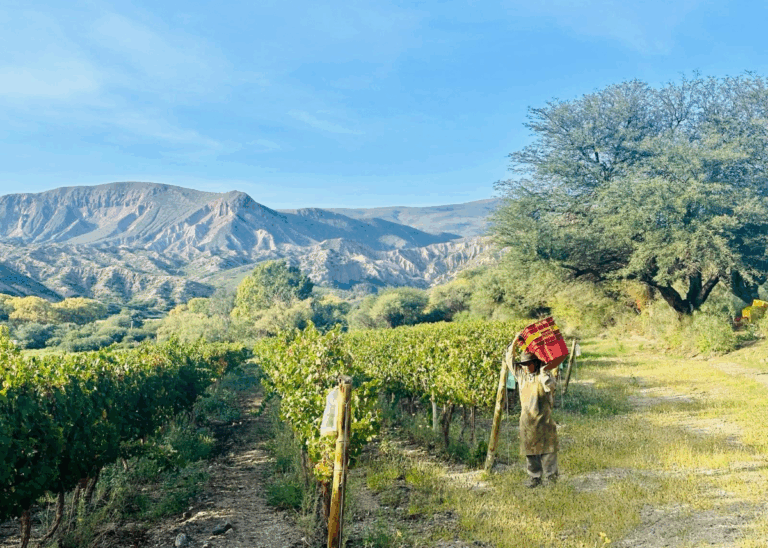[et_pb_section fb_built=”1″ _builder_version=”4.11.1″ _module_preset=”default” global_colors_info=”{}”][et_pb_row _builder_version=”4.11.1″ _module_preset=”default” global_colors_info=”{}”][et_pb_column type=”4_4″ _builder_version=”4.11.1″ _module_preset=”default” global_colors_info=”{}”][et_pb_text _builder_version=”4.11.1″ _module_preset=”default” global_colors_info=”{}”]
Recently we began sending out shipments of our newest Calchaquí Valley Collection.
This week, we revisit the history of Argentina’s noble vagabond and cowpoke, the gaucho.
More on that in a moment. But first… Can you age your Champagne?
Julien explains what happens when you leave a bottle in your cellar for a few years… the reason Champagne doesn’t age like other wines… and how to find the oldest, most exclusive vintage Champagnes…
[/et_pb_text][et_pb_video src=”https://youtu.be/9z0NtVeOxO4″ _builder_version=”4.11.1″ _module_preset=”default” width=”75%” width_tablet=”80%” width_phone=”100%” width_last_edited=”on|phone” module_alignment=”center” hover_enabled=”0″ global_colors_info=”{}” module_id=”video” sticky_enabled=”0″][/et_pb_video][et_pb_text _builder_version=”4.11.1″ _module_preset=”default” global_colors_info=”{}”]
Origins of The Gaucho (Continued)
After the first settlement at Buenos Aires, founded in 1536, succumbed to attacks from the local Indians, the remaining settlers fled, leaving their cattle and horses to wander and breed in the fertile grasslands surrounding the future capital city.
Buenos Aires would not be resettled for 50 years. In the meantime, word began to spread of an easy life to be had out on the surrounding grasslands (La Pampa), chasing down stray cattle and sleeping out under the stars. The nomads and vagabonds who made their way to La Pampa based on that promise became the forebearers of gaucho culture – living on horseback, consuming only beef and yerba mate, fighting Indians over La Pampa’s bounty.
[/et_pb_text][et_pb_image src=”https://bonnerprivatewines.com/wp-content/uploads/2023/02/Gauchos_en_un_alto.jpeg” title_text=”Gauchos_en_un_alto” align=”center” _builder_version=”4.11.1″ _module_preset=”default” width=”50%” width_tablet=”75%” width_phone=”100%” width_last_edited=”on|phone” global_colors_info=”{}”][/et_pb_image][et_pb_text _builder_version=”4.11.1″ _module_preset=”default” global_colors_info=”{}”]
Gauchos sipping yerba mate circa 1890
No one can quite agree on where the term gaucho originated.
Maybe it was originally a Turkish or Arabic word for low-ranking soldier, adopted and brought to the New World by the Spanish. Or it could have been a Portuguese word for the inhabitants of the Rio de la Plata (a river, the widest in the world, upon the banks of which Buenos Aires was built). Others believe it came from an old Indian word for vagrant.
[/et_pb_text][et_pb_image src=”https://bonnerprivatewines.com/wp-content/uploads/2023/02/Gaucho1868.jpeg” title_text=”Gaucho1868″ align=”center” _builder_version=”4.11.1″ _module_preset=”default” width=”25%” width_tablet=”40%” width_phone=”100%” width_last_edited=”on|phone” global_colors_info=”{}”][/et_pb_image][et_pb_text _builder_version=”4.11.1″ _module_preset=”default” global_colors_info=”{}”]
A gaucho from 1868
Either way, the first recorded use of the word didn’t happen until 1816, when gaucho culture was already well established. The gaucho wore an outfit consisting of bombachas, long, wide legged pants that narrow at the ankles; a wool poncho; high leather boots; and, instead of the Colt favored by his American counterpart, a razor sharp knife called a facón or cuchillo used variously for butchering animals, eating meals (as the gaucho’s sole dining utensil), and defending oneself in a brawl. He trusted no one above his favorite horse. “A man without a horse is a man without legs,” went the saying. Or, as one gaucho poem put it:
My horse and my woman
Went off to Salta
May the horse return
For I don’t need my woman.
Gaucho culture hit its golden era in the latter half of the 1800s, during Argentina’s myriad civil wars. Martín Miguel de Güemes raised a gaucho army to defend northwestern Argentina against the Spanish (before he was betrayed by local landowners and shot in the back). A gaucho warlord, or caudillo, Juan Manuel de Rosas, briefly ruled the short-lived Argentine Confederation as Supreme Head of the Confederacy (until he was brought down by another caudillo).
The subdivision of La Pampa and the federalist victory in the civil wars saw gaucho culture on the wane in the fertile plains outside Buenos Aires. Still, the gaucho character endures in Argentina’s collective imagination, and out in the most remote provinces, where cars can’t easily pass and raising cattle requires vast tracts of blue-green alfalfa, you may still catch a glimpse of a lonesome rider, wrapped in his poncho to protect from the winds, the silver scabbard of his cuchillo glinting under the powerful sun…
Until then,
Hasta la próxima
The Wine Explorer
[/et_pb_text][/et_pb_column][/et_pb_row][/et_pb_section]



